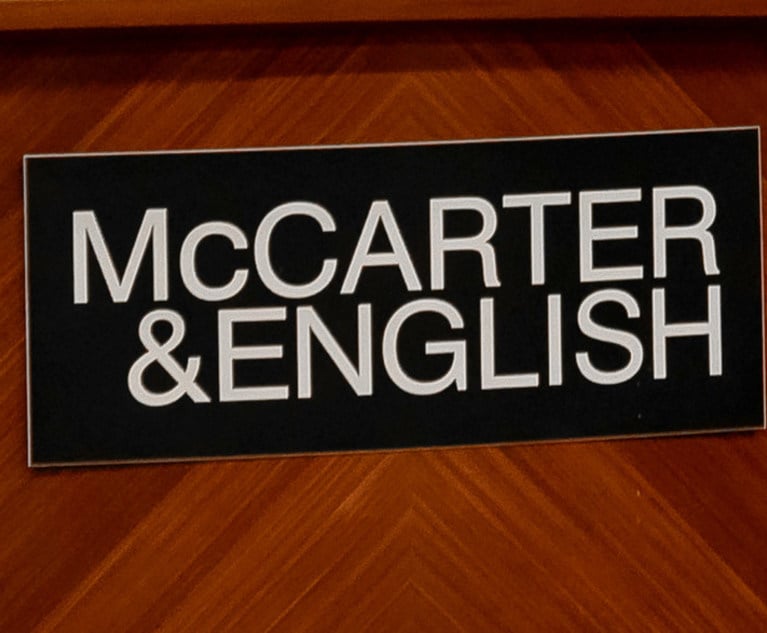 Credit: Africa Studio/Adobe Stock
Credit: Africa Studio/Adobe StockThe Law Firm Disrupted: It's Bonus Time
Once again, Milbank is the first mover, and peer firms will likely follow. But two questions remain. What figure are they going to match? And when?
November 14, 2024 at 08:33 PM
4 minute read
Many Big Law associates are already thinking about how they’re planning on putting their year-end bonuses to use, as I just learned on a jealousy-inducing visit over to Reddit. (Yes, I’m well aware of their long hours.)
Given the healthy year that most large firms are having, it’s safe to say that most of the usual suspects will, at the very least, match Milbank’s opening salvo, even if they’re not quite having the “record year” that Milbank chairman Scott Edelman highlighted in an internal memo.
But two questions remain. What figure are they going to match? And when?
For the first question, remember that Milbank—already coming off a record 2023, in which revenue grew nearly 18% to exceed $1.5 billion—has been bonus-happy this year. The year-end bonuses, which start at $15,000 for first years and top out at $115,000 for the most senior associates, follow a smaller round of summer bonuses that were not matched by peers. Putting them together, the firm’s first-year associates will have earned $21,000 beyond their base salaries, while the most senior associates will receive up to $140,000 in special pay.
If peers do elect to roll up the value of these summer bonuses into their year-end bonuses, that would lead to cumulative payments that would still trail the Big Law high water mark for yearly bonuses. That was back in 2021—when top firms, flush from a surge in work that followed the U.S. economy’s recovery from COVID lockdowns—delivered special bonuses on top of year-end bonuses, in addition to a previous round of summer bonuses. In total, these payments ranged from $31,000 to $202,000. And, remember, that year also saw a bump in associate base salaries.
With all that in mind, a full match certainly seems plausible.
But let’s dig into the timing. While there’s no doubt that managing partners have already run the math on what impact matching these bonuses will have on their own bottom line, they’re likely waiting on one more shoe to drop.
Once upon a time, Cravath Swaine & Moore was the market setter when it came to associate salaries and bonuses. Now that Milbank has usurped that role, Cravath still seemingly controls the floodgates. Only when that firm announces whether it’s matching (or, in some years, exceeding) the marker that Milbank laid down, will the rest of the market move.
Take last year, when Milbank made its announcement on Nov. 7 of both bonuses and associate raises, no other firms budged until Cravath largely matched Milbank’s package (with a slight salary bump for senior associates) on Nov. 28. That’s the second year in a row the firm has waited until after Thanksgiving.
But looking at the last six years, in three of those years, Cravath moved on the Monday before Thanksgiving, opening the door for its competitors promptly to follow suit. Good timing for those fiscally prudent associates to know exactly what kind of splurge they can make on Black Friday deals, even if they’re relying on credit until the bonuses hit their accounts by Dec. 31.
In the News
>> The firms in a position to deliver top-of-the-market bonuses tend to be particularly strong in the "money practices. " That means doubling down in both New York and London in pursuit of deals, restructuring, funds and finance work, according to a new story by my colleague Patrick Smith. “There’s only two markets that matter anymore," one recruiter said.
>> Does the litigation finance industry have anything to fear from GOP control of the White House and both chambers of Congress? Democrats, who are typically more supportive of the plaintiffs' bar, appear to be less enthusiastic about regulating the issue. But Republicans, who are typically more averse to the regulatory state, are also more in line with the corporate interests who end up as defendants in litigation. Jon Campisi digs into the issue for us.
NOT FOR REPRINT
© 2025 ALM Global, LLC, All Rights Reserved. Request academic re-use from www.copyright.com. All other uses, submit a request to [email protected]. For more information visit Asset & Logo Licensing.
You Might Like
View All
Are Counsel Ranks Getting 'Squeezed' as Nonequity and Associate Pay Grows?
5 minute read

Why Hogan Lovells and Perkins Coie Reversed, Will Now Pay Out Special Bonuses to Associates
4 minute read
Former McCarter & English Associate Fired Over 'Gangsta Rap' LinkedIn Post Sues Over Discrimination, Retaliation
6 minute readTrending Stories
- 1'A Death Sentence for TikTok'?: Litigators and Experts Weigh Impact of Potential Ban on Creators and Data Privacy
- 2Bribery Case Against Former Lt. Gov. Brian Benjamin Is Dropped
- 3‘Extremely Disturbing’: AI Firms Face Class Action by ‘Taskers’ Exposed to Traumatic Content
- 4State Appeals Court Revives BraunHagey Lawsuit Alleging $4.2M Unlawful Wire to China
- 5Invoking Trump, AG Bonta Reminds Lawyers of Duties to Noncitizens in Plea Dealing
Who Got The Work
J. Brugh Lower of Gibbons has entered an appearance for industrial equipment supplier Devco Corporation in a pending trademark infringement lawsuit. The suit, accusing the defendant of selling knock-off Graco products, was filed Dec. 18 in New Jersey District Court by Rivkin Radler on behalf of Graco Inc. and Graco Minnesota. The case, assigned to U.S. District Judge Zahid N. Quraishi, is 3:24-cv-11294, Graco Inc. et al v. Devco Corporation.
Who Got The Work
Rebecca Maller-Stein and Kent A. Yalowitz of Arnold & Porter Kaye Scholer have entered their appearances for Hanaco Venture Capital and its executives, Lior Prosor and David Frankel, in a pending securities lawsuit. The action, filed on Dec. 24 in New York Southern District Court by Zell, Aron & Co. on behalf of Goldeneye Advisors, accuses the defendants of negligently and fraudulently managing the plaintiff's $1 million investment. The case, assigned to U.S. District Judge Vernon S. Broderick, is 1:24-cv-09918, Goldeneye Advisors, LLC v. Hanaco Venture Capital, Ltd. et al.
Who Got The Work
Attorneys from A&O Shearman has stepped in as defense counsel for Toronto-Dominion Bank and other defendants in a pending securities class action. The suit, filed Dec. 11 in New York Southern District Court by Bleichmar Fonti & Auld, accuses the defendants of concealing the bank's 'pervasive' deficiencies in regards to its compliance with the Bank Secrecy Act and the quality of its anti-money laundering controls. The case, assigned to U.S. District Judge Arun Subramanian, is 1:24-cv-09445, Gonzalez v. The Toronto-Dominion Bank et al.
Who Got The Work
Crown Castle International, a Pennsylvania company providing shared communications infrastructure, has turned to Luke D. Wolf of Gordon Rees Scully Mansukhani to fend off a pending breach-of-contract lawsuit. The court action, filed Nov. 25 in Michigan Eastern District Court by Hooper Hathaway PC on behalf of The Town Residences LLC, accuses Crown Castle of failing to transfer approximately $30,000 in utility payments from T-Mobile in breach of a roof-top lease and assignment agreement. The case, assigned to U.S. District Judge Susan K. Declercq, is 2:24-cv-13131, The Town Residences LLC v. T-Mobile US, Inc. et al.
Who Got The Work
Wilfred P. Coronato and Daniel M. Schwartz of McCarter & English have stepped in as defense counsel to Electrolux Home Products Inc. in a pending product liability lawsuit. The court action, filed Nov. 26 in New York Eastern District Court by Poulos Lopiccolo PC and Nagel Rice LLP on behalf of David Stern, alleges that the defendant's refrigerators’ drawers and shelving repeatedly break and fall apart within months after purchase. The case, assigned to U.S. District Judge Joan M. Azrack, is 2:24-cv-08204, Stern v. Electrolux Home Products, Inc.
Featured Firms
Law Offices of Gary Martin Hays & Associates, P.C.
(470) 294-1674
Law Offices of Mark E. Salomone
(857) 444-6468
Smith & Hassler
(713) 739-1250








